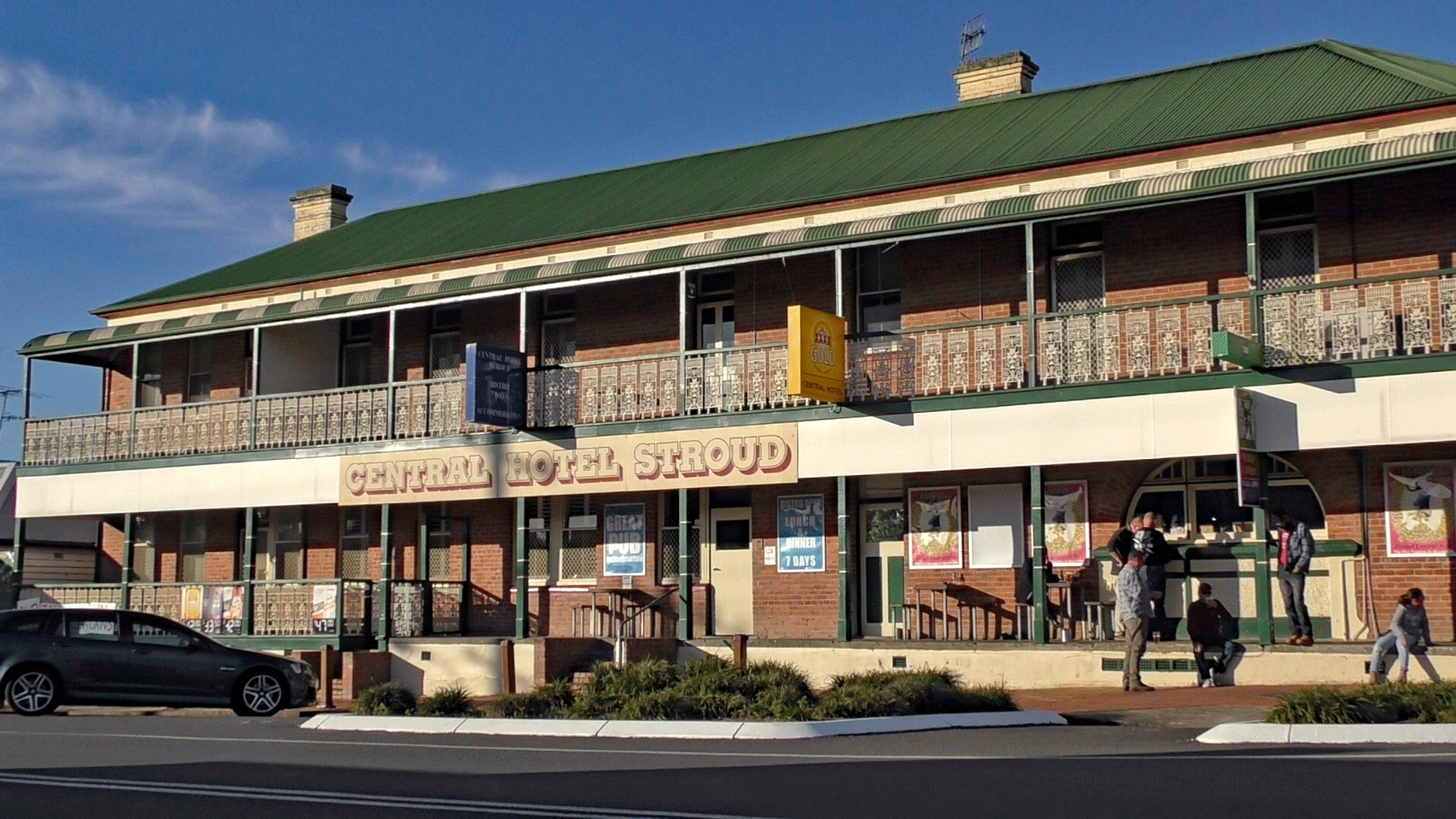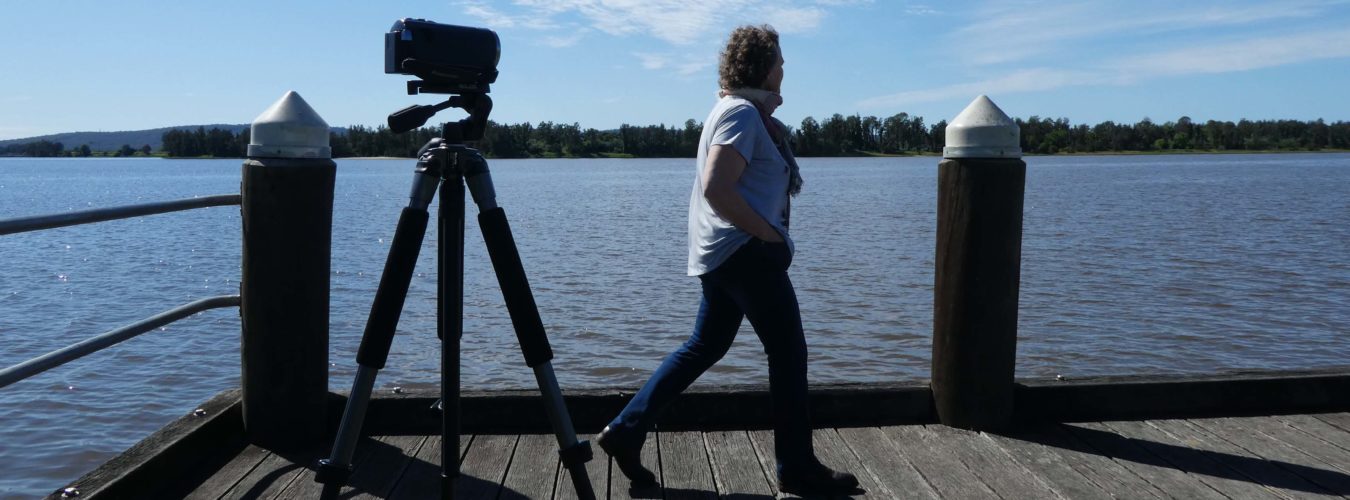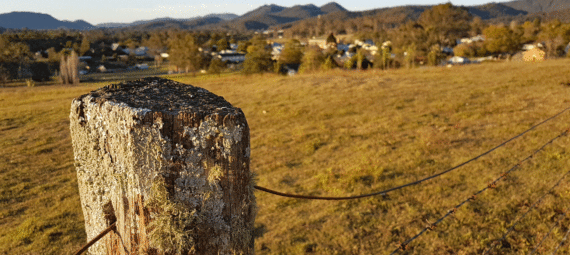Things we liked about Stroud
Stroud is not somewhere you go if you are after a rip snorting time – unless, of course, its during their annual Brick and Rolling Pin contest in July. This quirky festival is held each year in July and brings big crowds to the little township. It’s been happening since the 1960s. But Stroud is well worth calling in at any time of year. Its picturesque setting in the rolling hills of the Karuah River valley is one reason, but its large number of convict era buildings is the main drawcard. The town is classified by the National Trust with good reason.
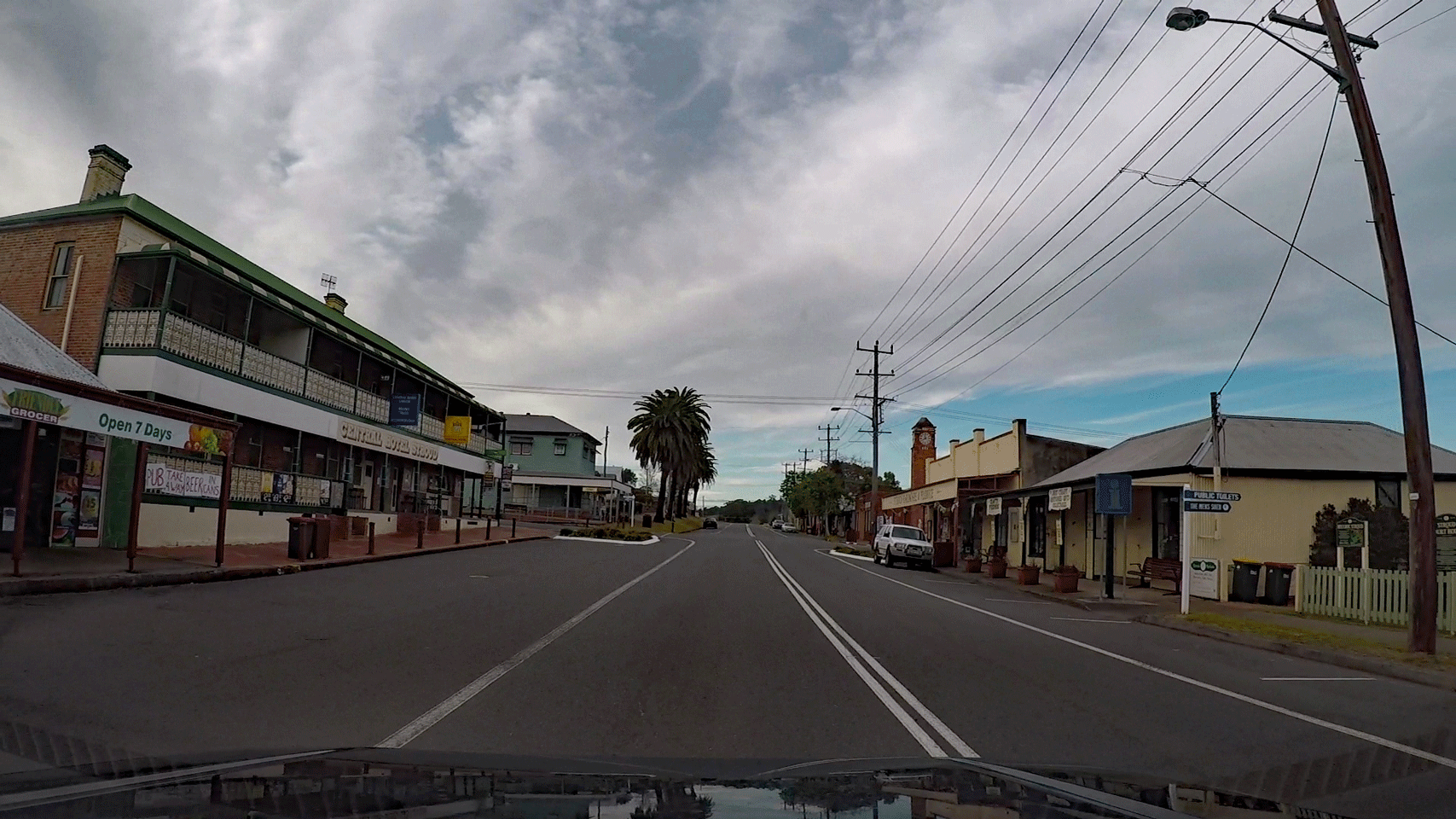
Stroud was created in the 1820s and 1830s as a company town for the Australian Agricultural Company. The AAC was established as a land development company with the assistance of the British Parliament’s Crown Grant of 1,000,000 acres in the Port Stephens area of the Colony of New South Wales. The company is still Australia’s largest integrated cattle and beef producer, and the Australian Agricultural Company is the oldest continuously operating company in the nation.
Most of Stroud’s significant buildings were constructed by the company’s convict workforce who made the bricks by hand and it’s an easy stroll around town to see them. There’s a map on a sign near the court house. We snapped a picture on our phones and off we went. Read more.
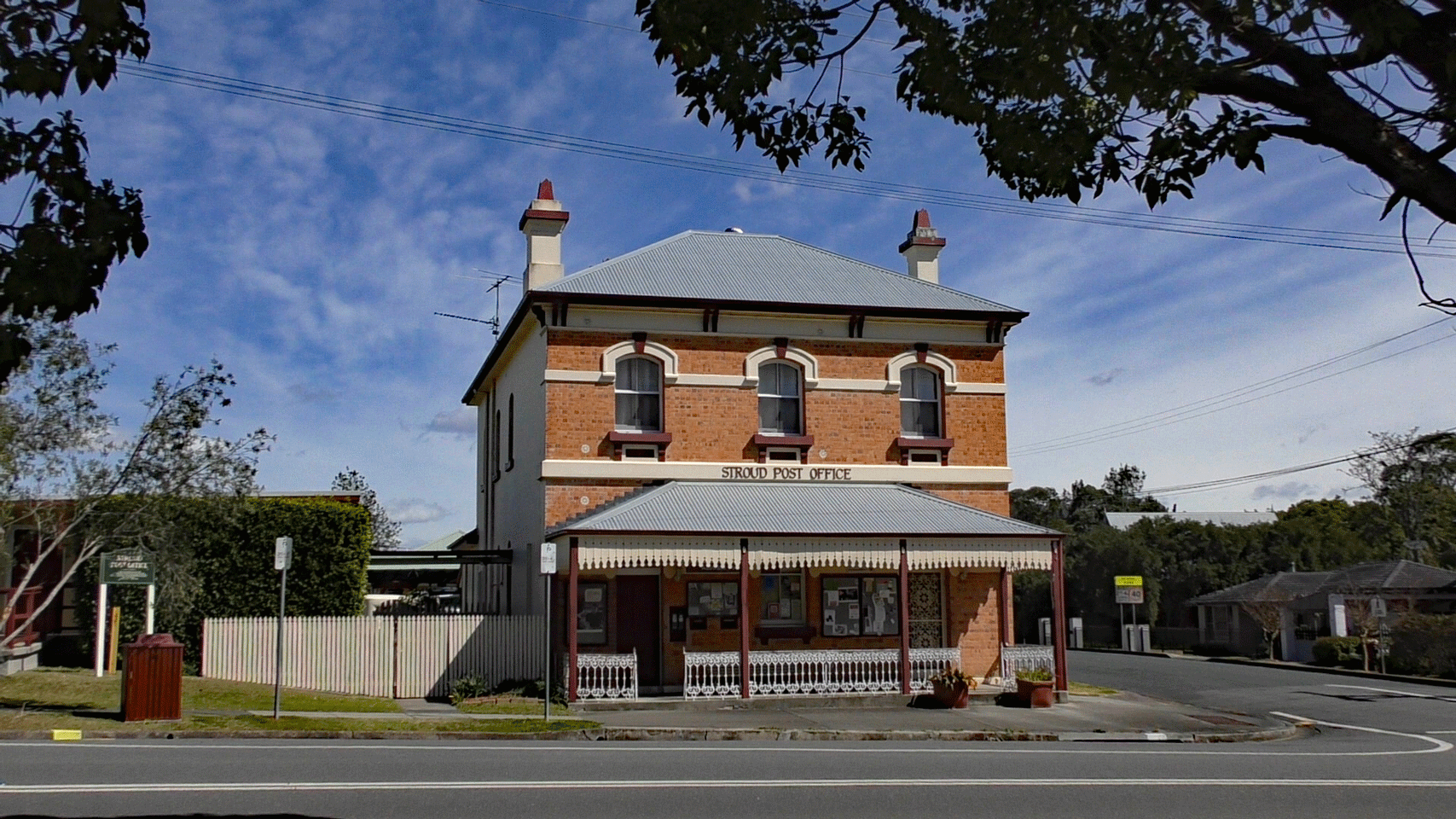
What we did
Exploring the town’s history was our main reason for being there.
Wandering
We started at the southern entrance to town with the Stroud Gate. This gate is a replica of one which once formed part of a fence enclosing the entire town. It’s said the fence was partly to defend livestock, but there was a 10pm curfew driven by fear of attack by convicts of local Indigenous people.
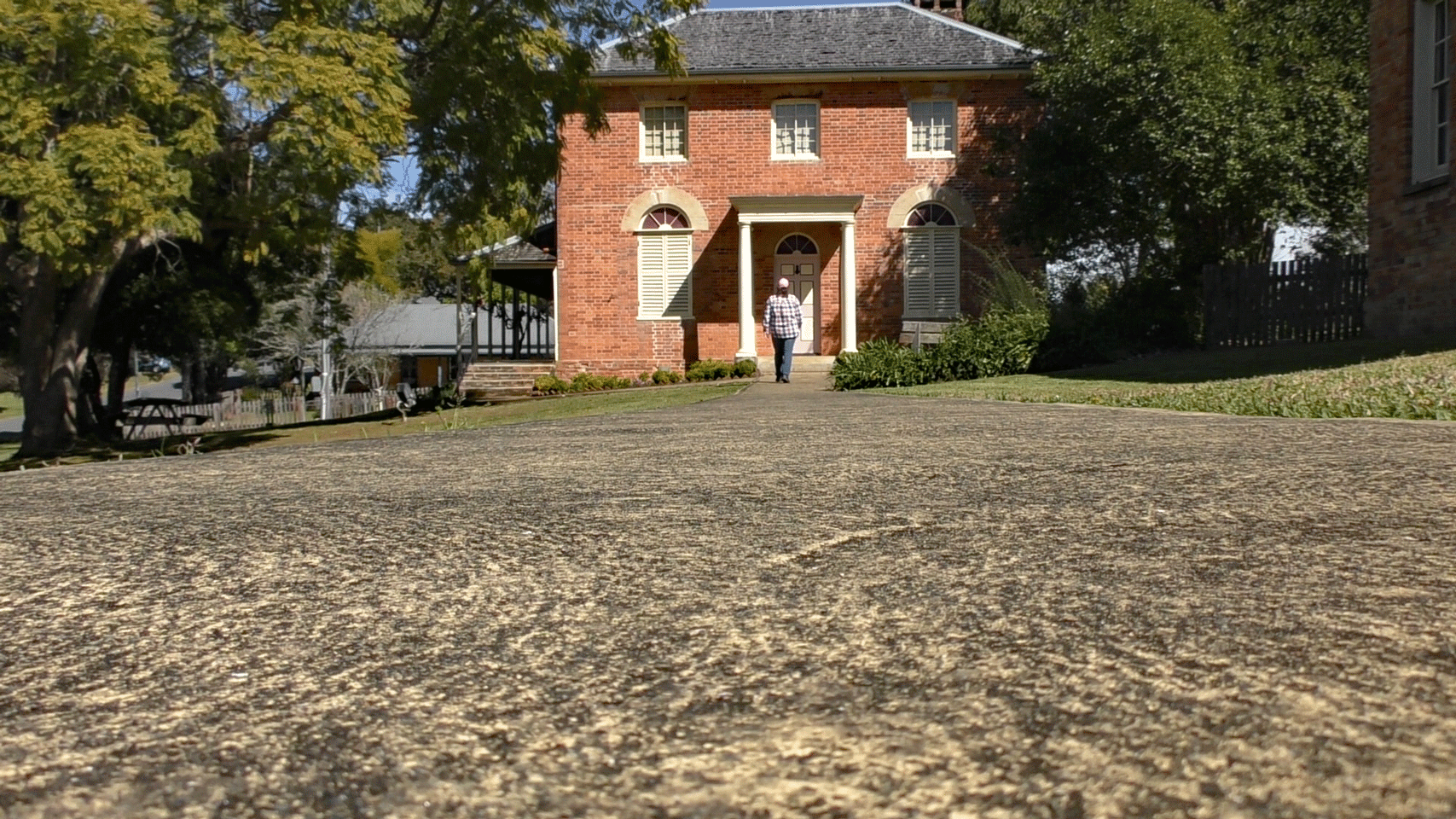
From there we wandered up the main street passed the grand Post Office and substantial Stroud House – built 1828 by convict labour with convict-made bricks and lime cement. The Court House is impressive and open to the public on Sundays 11am to 1pm, The Quambi House is another stand out local building which was previously a school but now houses the local museum. It’s open 1pm to 3pm on Sundays. Unfortunately we couldn’t stay around that long but it’s a good reason to pop in again.
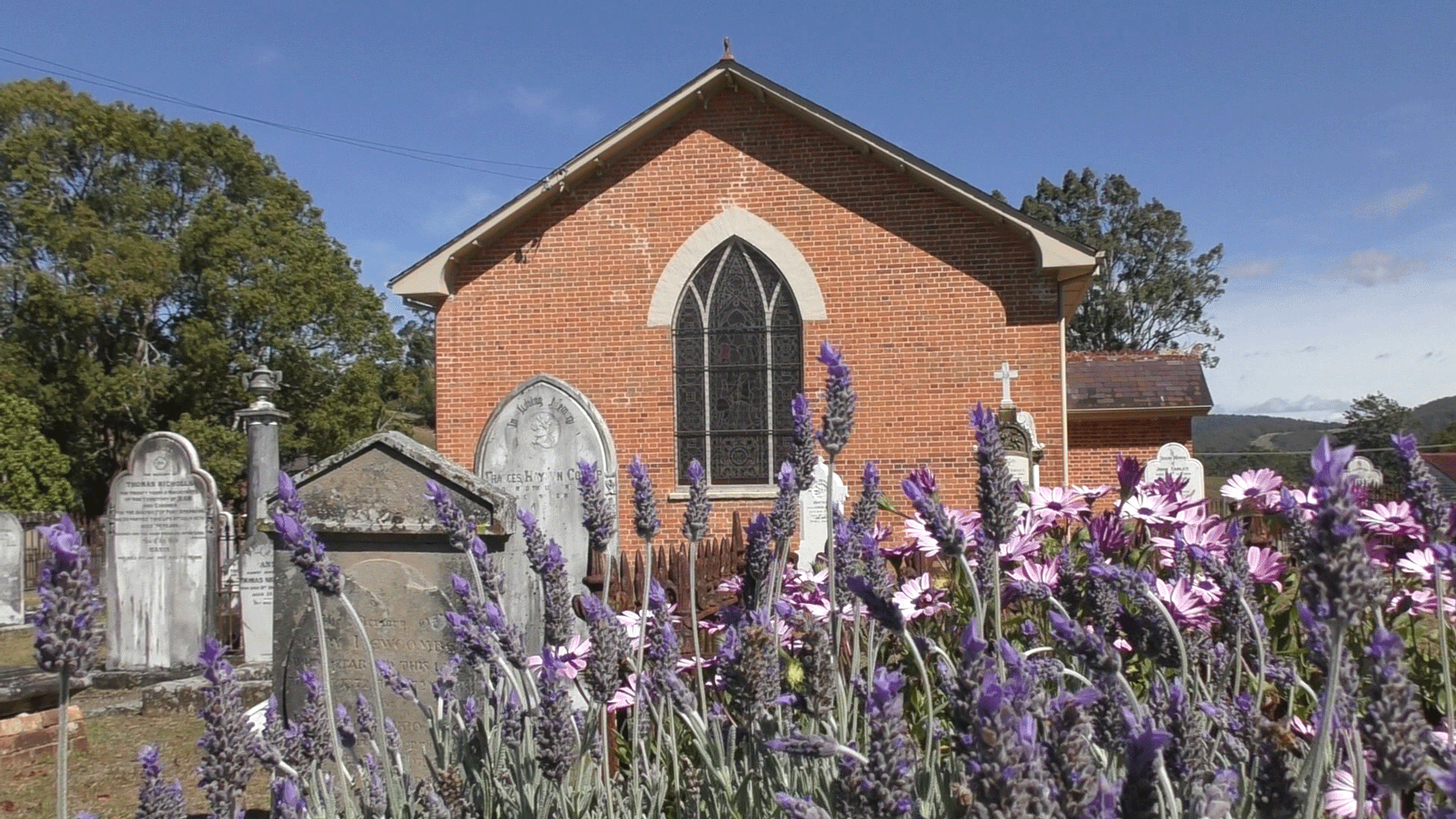
Book sales and graveyards
After popping into the book sale at the historic Anglican Rectory we took a stroll around the fascinating graveyards of St John’s Anglican Church – built 1833. The Church itself is in the Gothic Revival style and inside the portico is a small piece of stonework sent from Church of St Lawrence in Stroud, England.
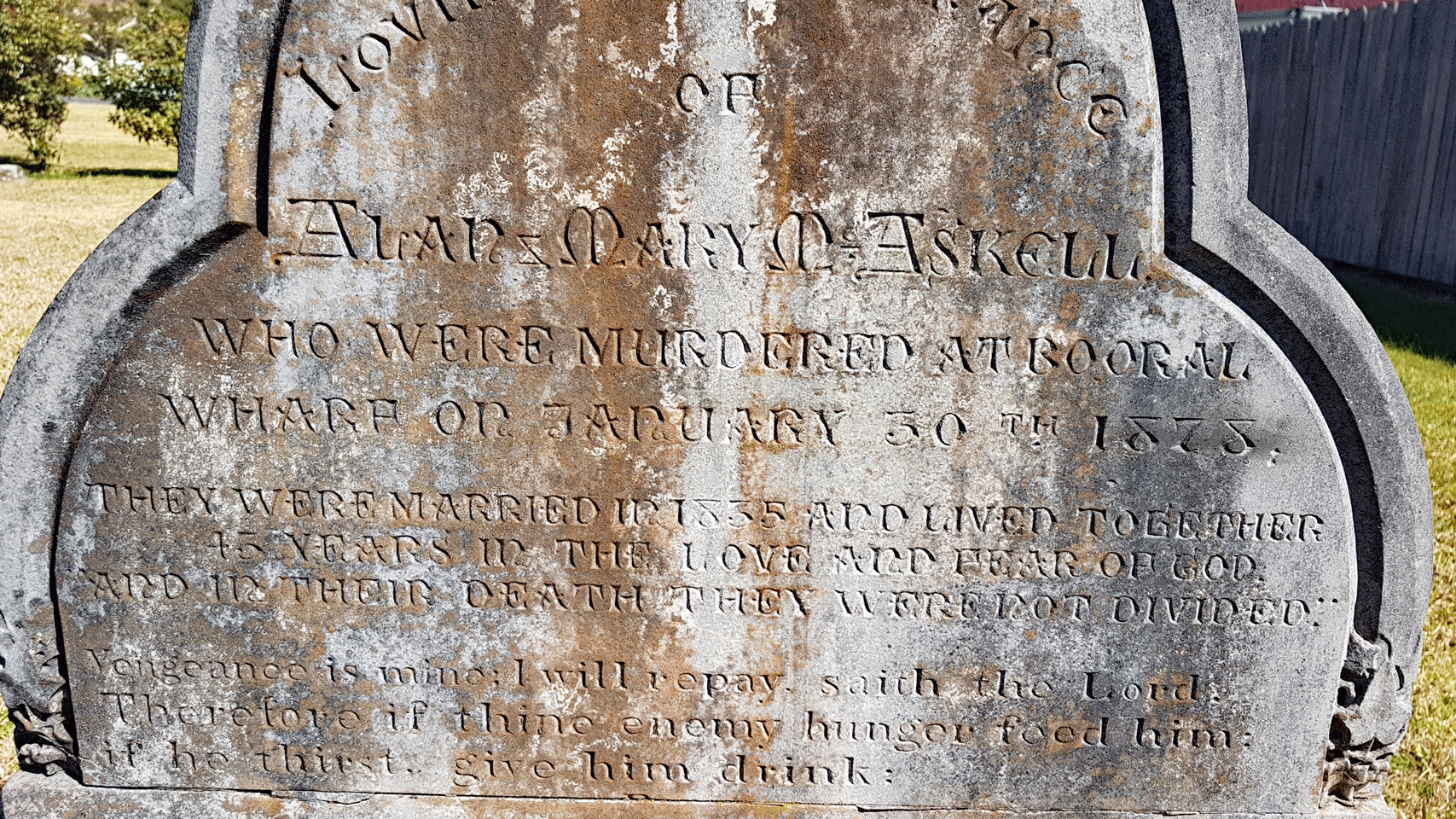
This carved piece of stone is said to be 600-700 years old. The surrounding graveyard could occupy you for some time with its tales of colonial life and times. The macabre gravestone of Mary and Allan McAskell who were bludgeoned to death in horrible circumstances in 1878 is an interesting one – and the murder remains unsolved.
There’s a memorial to lives lost in the shipwreck of the Carrington in 1842. The vessel was owned by the company. A plaque on the side of the church reads:
“To the memory of Joseph Woodlands and the crew of the A.A. Company’s schooner Carrington who perished on the night of the 19th May 1842 when the vessel was wrecked in a terrible gale and was irrecoverably lost on the North Head of Port Stephens. This stone, as a tribute of respect, was erected at the expense of the company.”
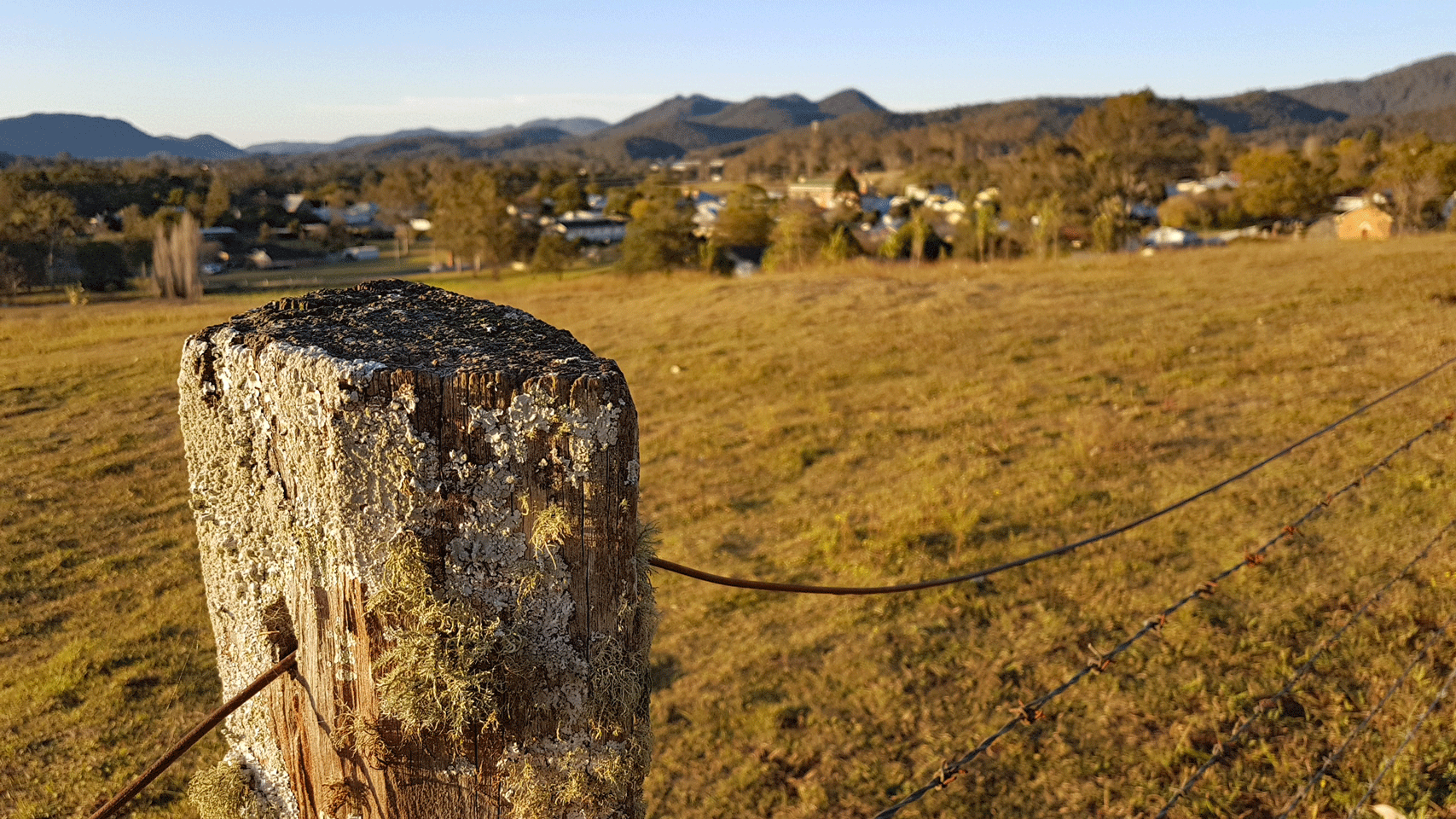
Silo Hill
This high point has great views over Stroud, and Stroud common which was given to the town by the company and remains in public ownership. The hill was named after eight underground silos which were built by convicts in 1841 to store the company’s grain and protect it attack by insects. The silos are 6 metres deep and 5 metres wide, internally lined with hand made bricks, and bell-shaped. Collectively they were capable of storing 10,000 bushels of grain.

Seven have been sealed off but one is open for inspection – but alas – it is time for the locals to take a look at this because the open silo is infested with weeds and you can’t see a thing peering down into the depths. You will also see two 60 pound Crimean War era cannons near the silos were made in England in 1855-1856. They became part of the battery protecting Sydney Harbour in 1866 and, in 1882, were sent to Signal Hill (now Fort Scratchley) in Newcastle. By 1909 they had become obsolete and were transported by boat from Newcastle to Booral and then by bullock dray to their present site.
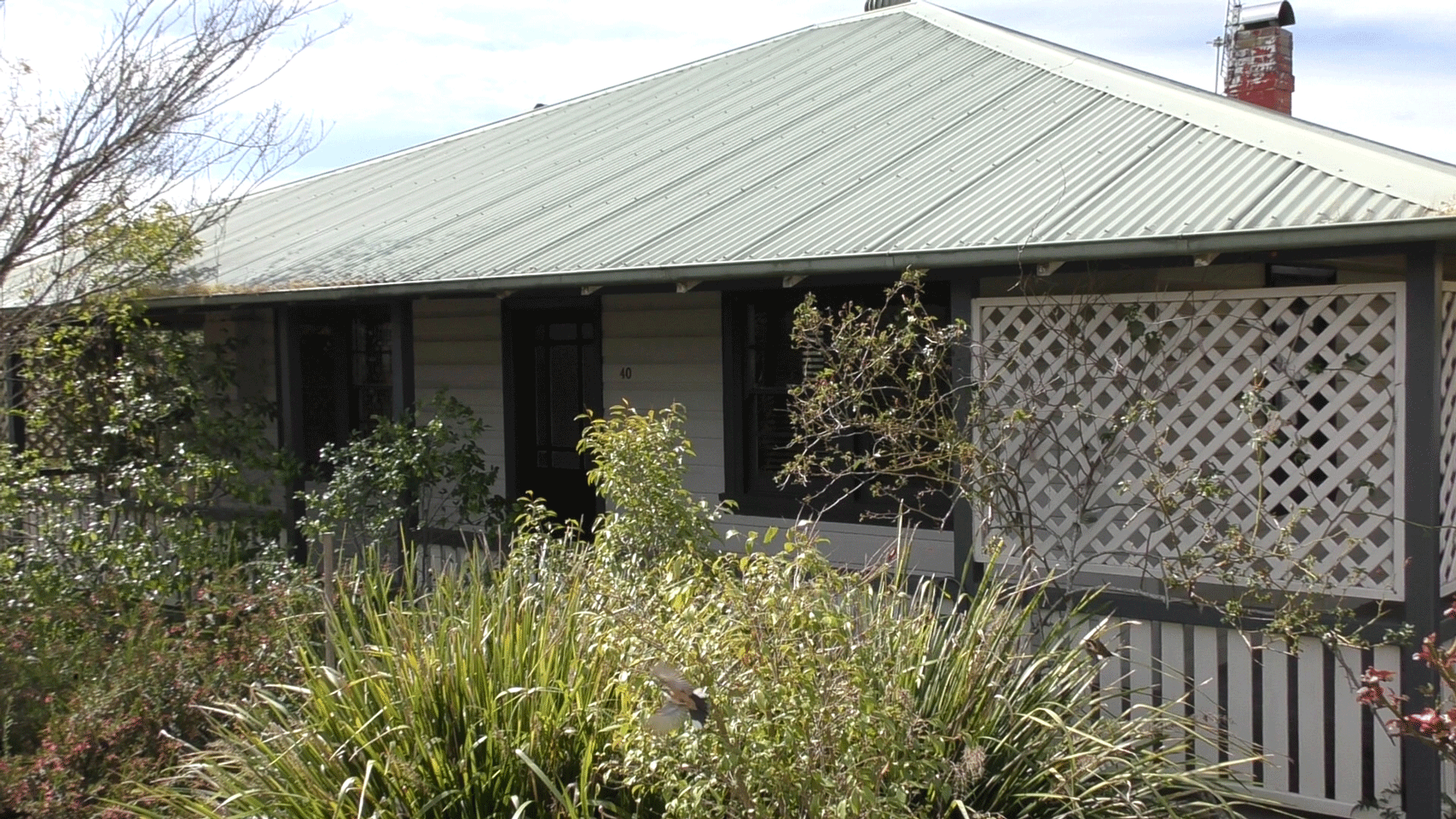
Where we stayed
We stayed at Mill Brook Cottage which we booked through Airbnb. We enjoyed the large open plan living space, the fireplace and modern kitchen with lovely views over the garden and the hills. It’s an easy walk to almost everything.
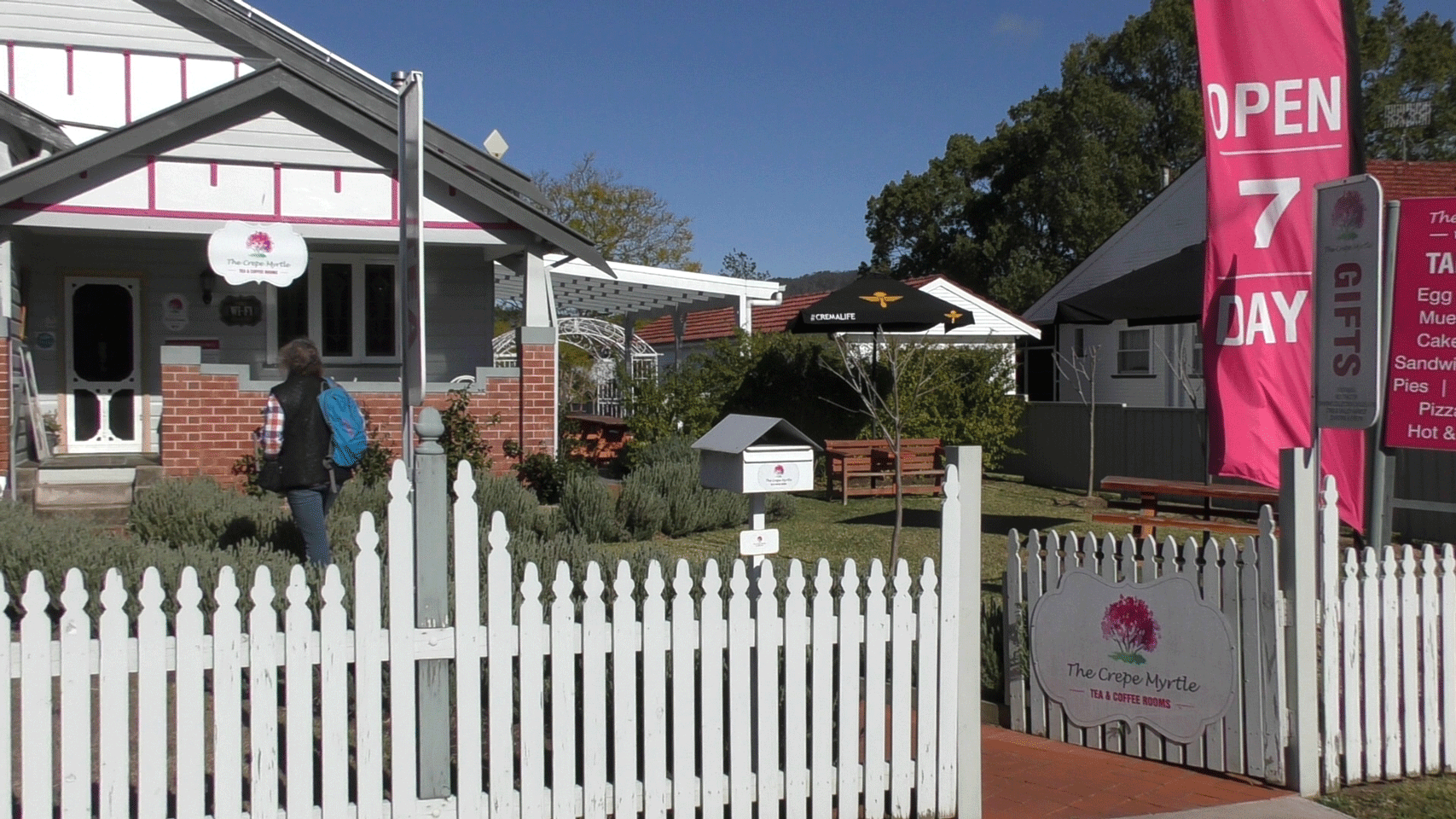
What we ate
We enjoyed a breakfast at Crepe Myrtle Tea and Coffee Rooms in the main street. It’s housed in a little cottage and there was a steady stream of locals which is always encouraging. As well as enjoying a meal you can browse through rooms full of interesting home-wares, crafts and gift-ware. It’s open weekdays 8.30am to 3.30pm and on weekends from 8am to 3.30pm.
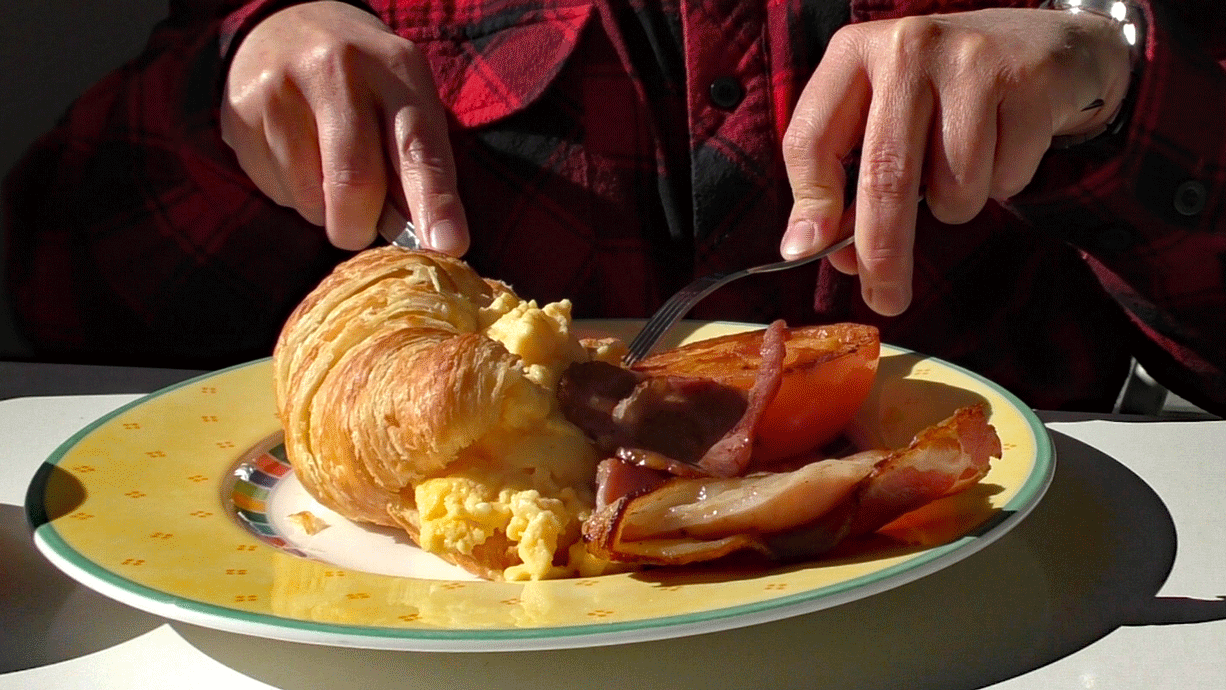
We had an evening meal at the King Hin Chinese Restaurant at Stroud Golf Club. Good solid country Chinese fare just like you’d expect it to be.
